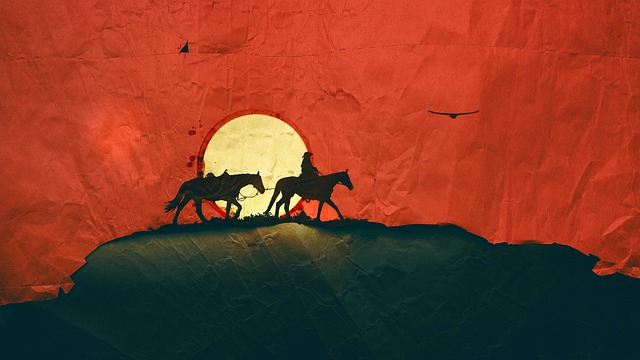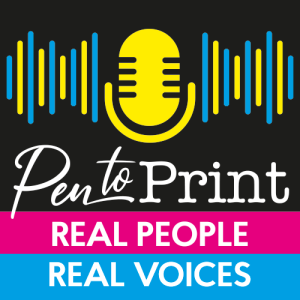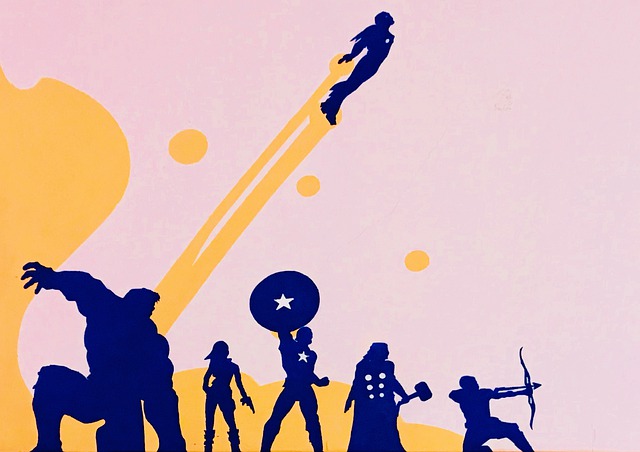Write On! Features: From Dodge City To Gotham City: How The Western Shapes The Superhero Story by Joseph Dodd
By Joseph Dodd
In the history of film, there have been, I think, two genres that, in their own times, dominated and shaped cinema. The first was the Western. The second, currently, is the superhero film. If these two apparently unrelated forms can rise to such prominence, there must be something in both that audiences respond to. In this article, I’d like to examine what that something, or some things, might be. In both specific instances and wider happenings, superhero stories owe a lot to Westerns.

Western films were ubiquitous in the 20th century. Almost a fifth of all feature films released from the silent era and through the 1950s were Westerns. According to Western historian Eliza Franklin: “It was hard to distinguish between the popularity of the Western and the popularity of motion pictures in general.” However, comparatively few of these films are remembered today.
The Magnificent Seven, directed by John Sturges, is notable because at its heart is a group of heroes. Yul Brynner stands out as the protagonist Chris Larabee Adams, but the relationships within the gang are just as crucial to the film.
The Magnificent Seven premiered in 1960. In the same year, another team of seven heroes made their debut: DC Comics’ Justice League. The next year, Marvel Comics brought out The Fantastic Four, and in 1963, late to the party, came the X-Men, and a little-known band called The Avengers.
Now, it’s a little speculative to suggest that the writers of DC and Marvel saw The Magnificent Seven and directly decided to combine their characters into teams. What is more likely is that, in the early ‘60s, Westerns and comics were responding to the same cultural zeitgeist.
These were the years of the Kennedy administration; a time when America’s psyche was changing. When Kennedy said: “Ask not what your country can do for you, ask what you can do for your country,” he outlined his approach of society pulling together and working towards a shared purpose.
The Magnificent Seven wasn’t the first Western to centre on multiple heroes, but is one of the first to do so in answer to that political ideology. By fighting as a unit, the Seven are stronger than any one of them. Similarly, after uniting their superheroes, Marvel and DC could have them fight far greater dangers.
In the mid-twentieth century, both Western and superhero comics were reacting to the same societal influences, therefore proving themes like this could find equal expression in both genres.
Nowadays, Westerns are reduced to either modest independent films or long outdated remakes (with occasional exceptions like the Coen Brothers’ staggering True Grit). However, I find the themes that guided classic Westerns still inform superhero stories.
Most conversations on the Western include 1953’s Shane, and who am I to rock the boat? Based on Jack Schaefer’s novel, the story follows a mysterious, insular gunfighter. Who knows where he’s going, or where he’s come from? Out West, he encounters a community of homesteaders persecuted by a cattle baron and his minions, and it’s left to Shane to defend them.
The nucleus of Shane is the contradiction faced by its hero. Shane’s past is never clarified but he is a man of violence. To save the homesteaders, he must use that violence to bring peace. However, in that world of peace, a man of violence cannot belong. After the film’s climactic gunfight, Shane departs, never to be seen again, asking the young protagonist to assure his mother that: “There are no more guns in the valley.”
Simply put, a virtuous Western hero fights to create a world with no place for him. Now, can you think of any superhero films where the main character does the same?
Throughout Christopher Nolan’s Dark Knight trilogy, the characters speak of a future when Gotham City does not need Batman to keep it safe. In the second film, Bruce Wayne prematurely believes that time has come, thanks to Harvey Dent. He insists to his childhood sweetheart, Rachel: “You know that day you once told me about, when Gotham would no longer need Batman? […] It’s happening now. Harvey is that hero. He locked up half the city’s criminals, and he did it without wearing a mask.” Here, Wayne displays Shane’s understanding that even righteous violence cannot rule forever. At the end of the film, Batman takes the blame for crimes committed by Dent, so his violent methods will be rejected, and the legend of a non-violent hero can go on to inspire positive change.
The inviolability of peace is a consistent theme in both Shane and modern Batman films. Both their heroes may be the last hope for the community, but their existence represents a dark past, so they must disappear to make way for progress – a conceit I believe Nolan’s Batman draws from the classic Western.
So, where does Marvel come in? I would argue that 2017’s Logan is the most overtly Western superhero film of recent times, from its setting to the tactical use of Johnny Cash’s music. However, the parallels run much deeper.
In his documentary How The West Was Lost, Rich Hall observes: “All Westerns are about individualism versus evil encroachment.” Think about how many Westerns portray malign businessmen trying to overrun the land and those who call it home. Shane, Pale Rider, How The West Was Won, to name just three.
In Logan, Wolverine and Professor X believe themselves the last of their kind. The audience learns the extinction of mutants was brought about by Dr Zander Rice, whose technological empire developed genetically engineered crops that eliminated them. As Rice insists: “The goal wasn’t to end mutant-kind, but to control it,” much like how the cattle barons and railroad builders of classic Westerns seek to control the frontier. Destructive businesses, in Westerns and in superhero films, are “machines in the garden” – apparently civilising forces that, in fact, spoil the world that was there before.
So far, I’ve explored thematic and narrative comparisons between Westerns and superhero stories. However, there are examples in both genres which ask more profound, disturbing questions.
One of the most essential Western tropes is that of the drifter – a character who wanders into the story, a stranger to the community. This outsider status enables them to protect the community’s laws, whilst existing above them. The drifter is free to act in ways that ordinary people cannot. If you allow a violent man that kind of immunity, what is to stop him from becoming judge, jury, and executioner?
This is explored most starkly in Clint Eastwood’s directorial debut, High Plains Drifter. A stranger rides into a small town out of the wilderness and is implored to protect it, in exchange for literally anything he wants. But where Shane is a well-mannered, gentle guardian, Eastwood’s character assaults women who insult him, militarises the people, and, in the final showdown, all but levels the town itself. The townspeople give this man license to do as he pleases if he’ll keep them safe. Eastwood’s character exploits the bargain for his own gratification, begging the question of the stability of this relationship in any Western.
Superheroes are outsiders too. Not because of their geographic placement, but because of their almost mythical powers, which few can contend with. They habitually use these powers to fight for good, often dictated by a moral code (“With great power comes great responsibility,” being a perfect example). However, what is truly standing in the way of them using it for their own ends?
DC Comics often approach this question in-depth; just take a look at Watchmen. The recent DC Extended Universe films ask how safe it is to entrust yourself to godlike beings who, if the tables were turned, could be every bit as dangerous as their enemies. Superman’s arch-rival Lex Luthor calls it: “Depending upon the kindness of monsters.” On one hand, humanity gains safety from these heroes, but on the other, throws itself at their mercy, with no hope of retaliating. Essayist David Berry, in Superhero Westerns; From Clint Eastwood To Captain America, terms this “the fascist nature of costumed crusaders.” Berry cites 2016’s Captain America: Civil War, as being: “To superhero movies what something like The Searchers or Unforgiven is to the Western: America’s individualist streak coming face-to-face with the havoc it can wreak.” It’s an apt description, since the issue at the heart of this film is the regulation of superheroes. Should people with unlimited powers be allowed to act unchallenged?
Both Westerns and superhero stories lay power and impunity in the hands of their heroes. Mostly, they are used to do what is right. But you can draw a strong line between Eastwood’s wrathful avenger in High Plains Drifter and the potential dangers of unchecked superhumans. Westerns and superhero movies are equally fertile grounds to explore both the fantasy and the threat of power.
There are many parallels between Westerns and superhero films, in terms of their themes and the way they communicate them. But I believe that, right now, we can see proof that the genres also develop along almost identical lines.
1952 was a particularly huge year for the Western. By one count, 80 clear-cut Westerns were released that year. Among them was a film called Son Of Paleface, a parodic comedy starring Bob Hope.
The reason why is simple. Filmgoing audiences had been flooded with Westerns. The more films in a genre, the harder it is for producers and directors to find new avenues of expression, and so it becomes stagnant. Comedy spoofs then start providing relief from the old cliches, and before long, audiences move on.
I would argue that precisely the same thing is happening with superhero films now. In a little over ten years, Marvel movies have dominated the cinematic landscape. Their pre-eminence is comparable to that of the Western in the 20th century, and the signs that audiences want something fresh are emerging.
Deadpool and its sequel, heavily sarcastic superhero films taking constant pot-shots at the genre, are the second and third highest-grossing R-rated films of all time. Another successful example is Shazam! – an adaptation of, arguably, one of Marvel’s silliest heroes, highly aware of how silly it is. These films are not outright parodies, like Son Of Paleface, but they do poke fun at the superhero genre in a way that earnest additions to the various franchises don’t, so reaping significant financial rewards.
Westerns and superhero movies share the same history. A genre overpowers popular culture but becomes over-saturated, and begins to burn out, first by the success it draws from mocking itself. This, to me, is the final proof of the links between the two genres. Not only do they share themes and influences, but they also impact on audiences in the same way over time. In basically every aspect in which a film functions, from storytelling to marketability, Westerns and superheroes are alike.
I didn’t want to conclude without mentioning the 2012 Best Animated Feature winner, Rango. It works as both an honest contribution to the Western genre and an intelligent pastiche. In this film, the characters pray to a mystical ‘Spirit of the West’. When Rango finally meets this man, his ‘alabaster carriage’ is revealed to be a golf cart, the iconic vehicle of the movie set, and his ‘golden guardians’ are trophies, clearly representing Oscars.
The ‘Spirit of the West’ does not stand for the death of the Western frontier. He stands for the fading myth of the Hollywood Western. For a time when the genre was a decorated, Academy-Award-winning cornerstone.
As I’ve explained, Western and superhero films are inextricably linked. From the days when they reacted to the same societal changes, to today, when the original stories of supermen still inform our slick modern comic book adaptations. The highs and lows of the genres are reflected in each other. So, is the superhero genre waiting for its own ‘Spirit of the West’, as its dominance fades? Only time will tell.
Read the latest issue of Write On! magazine (11) online.
*****
Write On! Audio Podcast Contributor Giveaway

Get involved with Write On! Audio. As a contributor, you could win A Writer’s Journal Workbook by Lucy van Smit. All Write On! Audio submissions (creative or opinion pieces up to six minutes, inspirational moments one to two mins – a short poem for example and why it inspires you – submitted before 20th February) will be considered eligible. The first two pieces chosen for broadcast will receive a book. Submit on: pentoprint.org/get-involved/submit-to-write-on/.
Visit anchor.fm/pentoprint to listen to the Write On! Podcast and get inspired.
Launched by Bloomsbury, A Writer’s Journal Workbook is packed with creative tasks, goals and advice. As an added bonus, you can also purchase it directly with this special discount code: AWJW25.
goals and advice. As an added bonus, you can also purchase it directly with this special discount code: AWJW25.
Superhero stories owe a lot to Westerns...Both lay power and impunity in the hands of their heroes.




